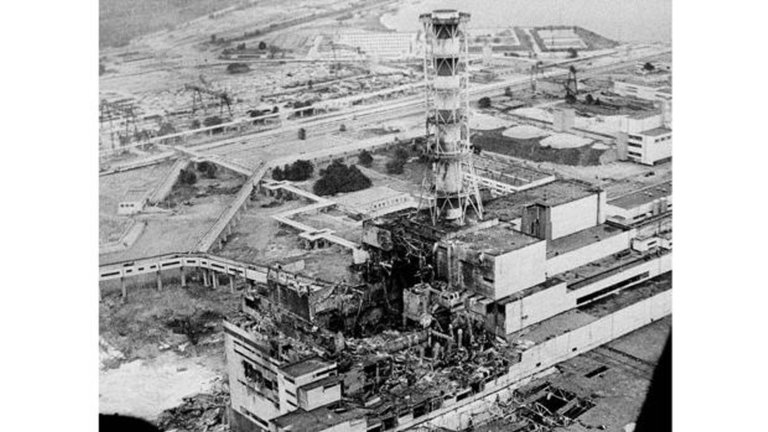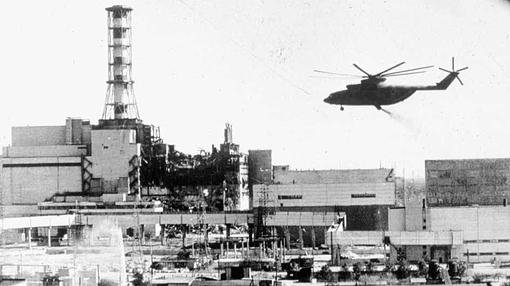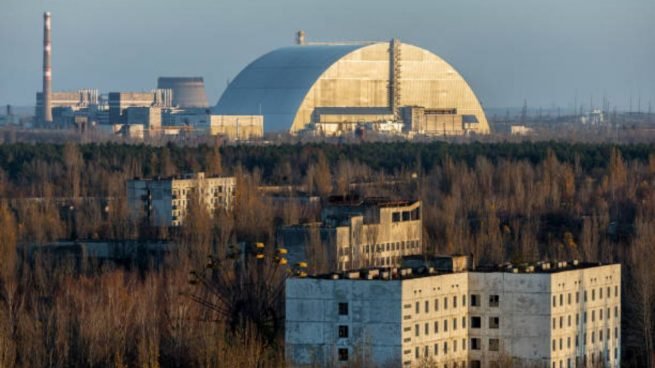Chernobyl Nuclear Accident Story.
The website (https://www.nationalgeographicla.com/historia/2019/05/el-desastre-de-chernobil-que-ocurrio-y-cuales-son-sus-efectos-largo-plazo) tells us about what happened in Chernobyl
"This true story tells of an event that occurred on April 26, 1986 at the Vladimir llich Lenin nuclear power plant. This was an unexpected accident for the engineers in charge of reactor 4 of the nuclear power plant, where the worst nuclear accident in history occurred in what is now northern Ukraine, with the explosion and fire of a reactor at a nuclear power plant. The incident, which was kept a secret, was a watershed moment for both the Cold War and the history of nuclear power. More than thirty years later, scientists estimate that the area surrounding the former power plant will not be habitable for another 20,000 years, the reactor explosion was exposed and spewed radioactive material into the atmosphere.
Firefighters attempted to extinguish a series of flares at the plant, and eventually, helicopters dropped sand and other materials in an attempt to quell the fire and contain the contamination. Despite the deaths of two people in the explosions, the hospitalization of workers and firefighters, and the danger of nuclear fallout and fire, there were no evacuees in the surrounding areas (not even in the nearby town of Pripyat, which was built in the 1970s to house plant workers) until 36 hours after the disaster began.
Disclosure of the nuclear accident was considered a major political risk, but by then it was too late: the meltdown had already spread radiation as far as Sweden, where authorities at another nuclear power plant began to wonder what was happening in the USSR. After denying it, on April 28, the Soviets briefly announced the accident.
The world immediately realized that it was witnessing a historic event. Up to 30 percent of Chernobyl's 190 metric tons of uranium was now in the atmosphere, and the USSR eventually evacuated 335,000 people, and set up a 30-kilometer "exclusion zone" around the reactor.
Initially, 28 people were killed following the accident, while more than 100 were injured. The United Nations Scientific Committee on the Effects of Atomic Radiation has reported that more than 6,000 children and adolescents developed thyroid cancer after exposure to radiation from the incident; however, some experts have questioned this claim.
International researchers believe that ultimately approximately 4000 people who were exposed to high levels of radiation may succumb to radiation-related cancers; while approximately 5000 people who were exposed to lower levels of radiation may suffer the same fate. However, the full consequences of the accident, which include the effects on mental health and even on subsequent generations, remain a subject of debate and research.
This event was worldwide history that affected many countries in Europe leaving many after-effects on the people who received that radiation causing illnesses such as: Reddening of the skin, hair loss, burns, organ and tissue damage.
Currently the Chernobyl city is not habitable and is visited by tourists who are allowed access accompanied by authorized guides and with a team of protective suits, helmets and masks for breathing, the tour lasts a few minutes to prevent exposure to high levels of radiation to harm people.
Today, the reactor remains are inside a massive steel containment structure, installed in late 2016. Containment efforts and monitoring continue and it is believed that cleanup will continue to take place until 2065.
Version e español / Spanish version
Historia del accidente nuclear de Chernobyl.
Esta historia real cuenta un hecho ocurrido el 26 de abril de 1986 en la central nuclear Vladimir llich Lenin. Este fue un accidente inesperado para los ingenieros a cargo del reactor 4 de la central nuclear, donde se produjo el peor accidente nuclear de la historia en lo que hoy es el norte de Ucrania, con la explosión e incendio de un reactor en una central nuclear. El incidente, que se mantuvo en secreto, fue un momento decisivo tanto para la Guerra Fría como para la historia de la energía nuclear. Más de treinta años después, los científicos estiman que el área que rodea a la antigua central eléctrica no será habitable durante otros 20.000 años, la explosión del reactor quedó expuesta y arrojó material radiactivo a la atmósfera.
Los bomberos intentaron apagar una serie de bengalas en la planta y, finalmente, los helicópteros arrojaron arena y otros materiales en un intento de sofocar el fuego y contener la contaminación. A pesar de la muerte de dos personas en las explosiones, la hospitalización de trabajadores y bomberos, y el peligro de lluvia radiactiva e incendio, no hubo evacuados en las áreas circundantes (ni siquiera en la cercana ciudad de Pripyat, que fue construida en la década de 1970). para albergar a los trabajadores de la planta) hasta 36 horas después de que comenzara el desastre.
La revelación del accidente nuclear se consideró un riesgo político importante, pero para entonces ya era demasiado tarde: el colapso ya había extendido la radiación hasta Suecia, donde las autoridades de otra central nuclear comenzaron a preguntarse qué estaba pasando en la URSS. Tras negarlo, el 28 de abril, los soviéticos anunciaron brevemente el accidente.
El mundo se dio cuenta de inmediato de que estaba presenciando un evento histórico. Hasta el 30 por ciento de las 190 toneladas métricas de uranio de Chernobyl estaban ahora en la atmósfera, y la URSS finalmente evacuó a 335.000 personas y estableció una "zona de exclusión" de 30 kilómetros alrededor del reactor.
Inicialmente, 28 personas murieron tras el accidente, mientras que más de 100 resultaron heridas. El Comité Científico de las Naciones Unidas sobre los Efectos de las Radiaciones Atómicas ha informado que más de 6.000 niños y adolescentes desarrollaron cáncer de tiroides después de la exposición a la radiación del incidente; sin embargo, algunos expertos han cuestionado esta afirmación.
Los investigadores internacionales creen que, en última instancia, aproximadamente 4000 personas que estuvieron expuestas a altos niveles de radiación pueden sucumbir a cánceres relacionados con la radiación; mientras que aproximadamente 5000 personas que estuvieron expuestas a niveles más bajos de radiación pueden sufrir la misma suerte. Sin embargo, todas las consecuencias del accidente, que incluyen los efectos en la salud mental e incluso en las generaciones posteriores, siguen siendo objeto de debate e investigación.
Este evento fue historia mundial que afectó a muchos países de Europa dejando muchas secuelas en las personas que recibieron esa radiación provocando enfermedades como: Enrojecimiento de la piel, caída del cabello, quemaduras, daños en órganos y tejidos.
Actualmente la ciudad de Chernobyl no es habitable y es visitada por turistas a los que se les permite el acceso acompañados de guías autorizados y con un equipo de trajes protectores, cascos y máscaras para respirar, el recorrido tiene una duración de unos minutos para evitar que la exposición a altos niveles de radiación perjudique. personas.
Hoy, los restos del reactor se encuentran dentro de una estructura de contención de acero masiva, instalada a fines de 2016. Los esfuerzos de contención y el monitoreo continúan y se cree que la limpieza continuará hasta 2065."





Thank you for sharing the post. I've worked in nuclear power for a long time. I have a soft spot for these kinds of articles. I studied this, along with other accidents, in school and during my jobs. It's a horrible event that was 100% preventable.
The reason nuclear power is possible is due to the release of delayed neutrons during the fission process. These types of neutrons get released slow enough for our technology to control their impact during the fission process within reactors. The other types of neutrons are called prompt neutrons. Fission reactions release them at about 10^-14 seconds which our technology is NOT capable of addressing.
The majority of nuclear reactors get designed to prevent or at least mitigate the contribution of prompt neutrons to fission power. Chernobyl? Not at all. Their design promoted the possibility of prompt criticality (fission due to prompt neutrons). The engineers at that power plant disabled safety protocols that led to the disaster. I also fully believe management had their part to play. Back in those days, safety was not a priority.
Thanks & References
Thanks again for posting about the accident. I'm sure many can learn from it. Also, I noticed you didn't cite any sources of information for the post. Can you please do so?
Even though I've been working in nuclear power for 20+ years, I still reference the information I present. It's an expectation to do so in this community. Normal responses to posts without references are to DV the article immediately. If you can add the references, I can remove the downvote and upvote your post. If not, I can't remove the downvote. The article I'm referring to is called Chernobyl Timeline.
Finally, you should add more tags to your post. It will give you much greater coverage and provide you with more opportunities for others to vote on your work. stemgeeks and stemsocial are great groups that focus on STEM articles in particular.
Hello thank you very much for your comment I will take it into account for my next publications, every day you learn something new happy afternoon.
Thanks for adding the reference. I removed the DV, but for next time. site the references where you're using them.
For instance, if I want to quote you're article, I would do it as follows and reference the article:
maribeln said this
Reference: [highlighted](website reference)
Direct Quote: > Followed by the quote
Are you familiar with a HIVE group called #theterminal? They're a group that specializes in welcoming new people to HIVE. Their fantastic to work with and will guide you to a good path. They helped me out tremendously when I first started.
Congratulations @maribeln! You have completed the following achievement on the Hive blockchain and have been rewarded with new badge(s) :
Your next target is to reach 30 posts.
You can view your badges on your board and compare yourself to others in the Ranking
If you no longer want to receive notifications, reply to this comment with the word
STOPCheck out the last post from @hivebuzz:
Support the HiveBuzz project. Vote for our proposal!